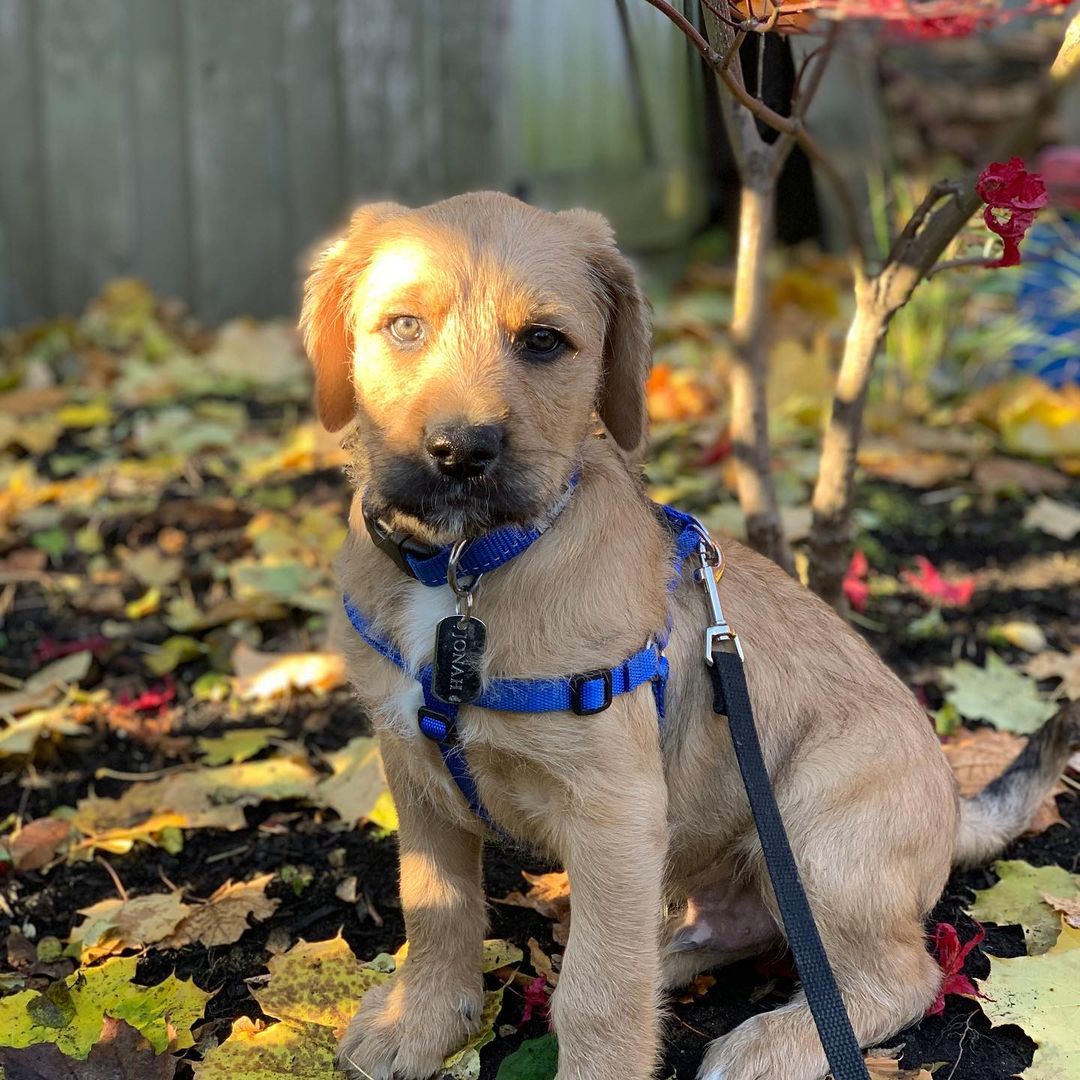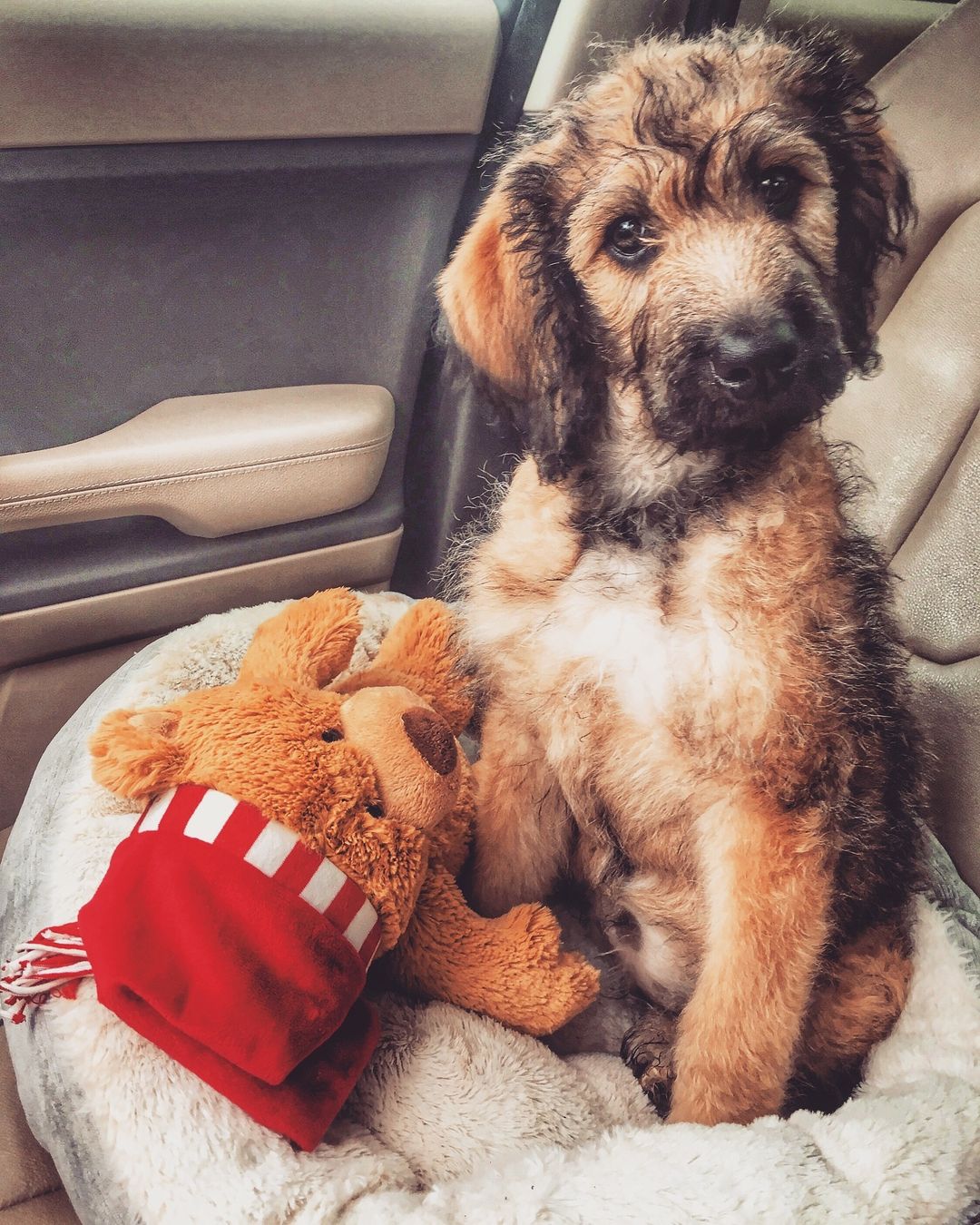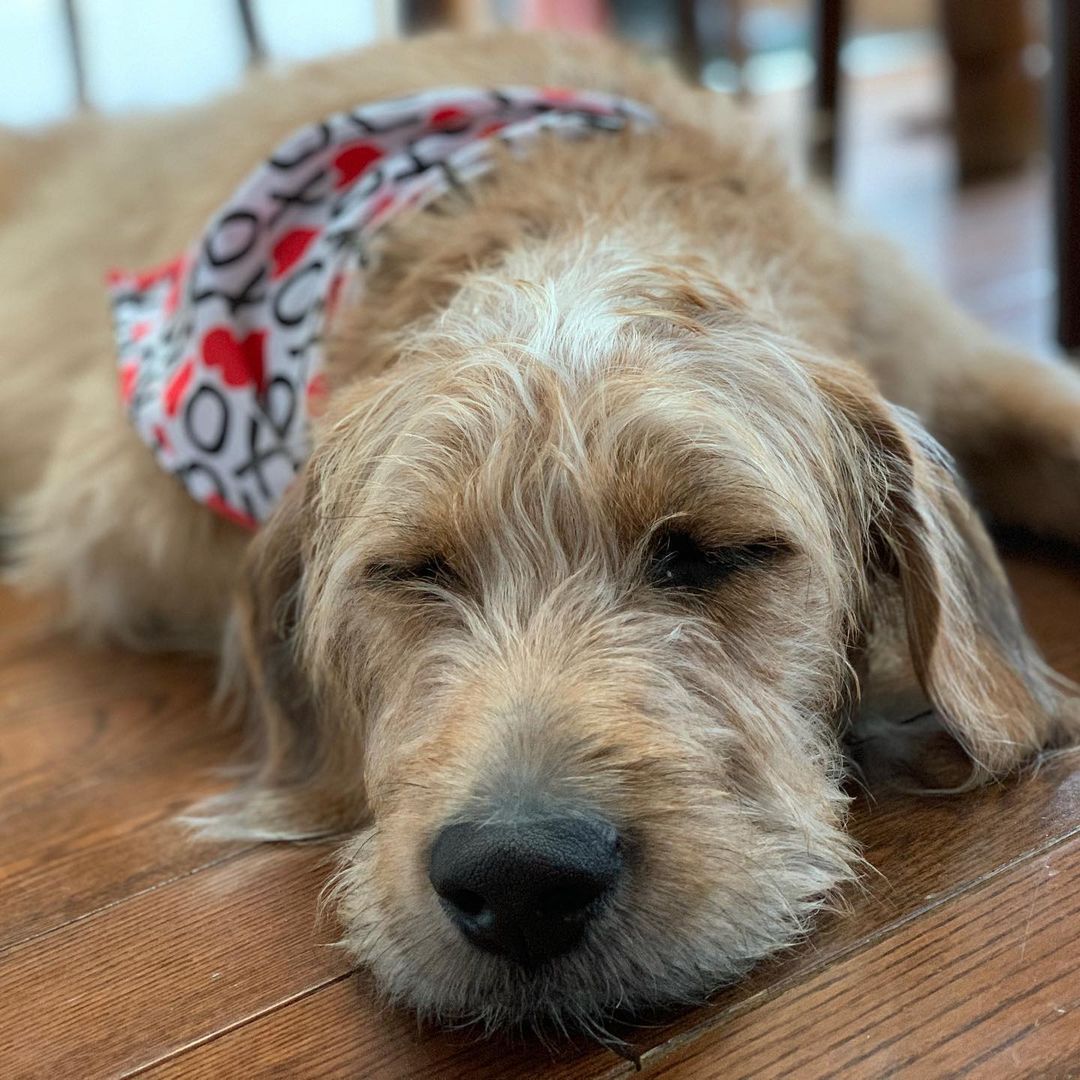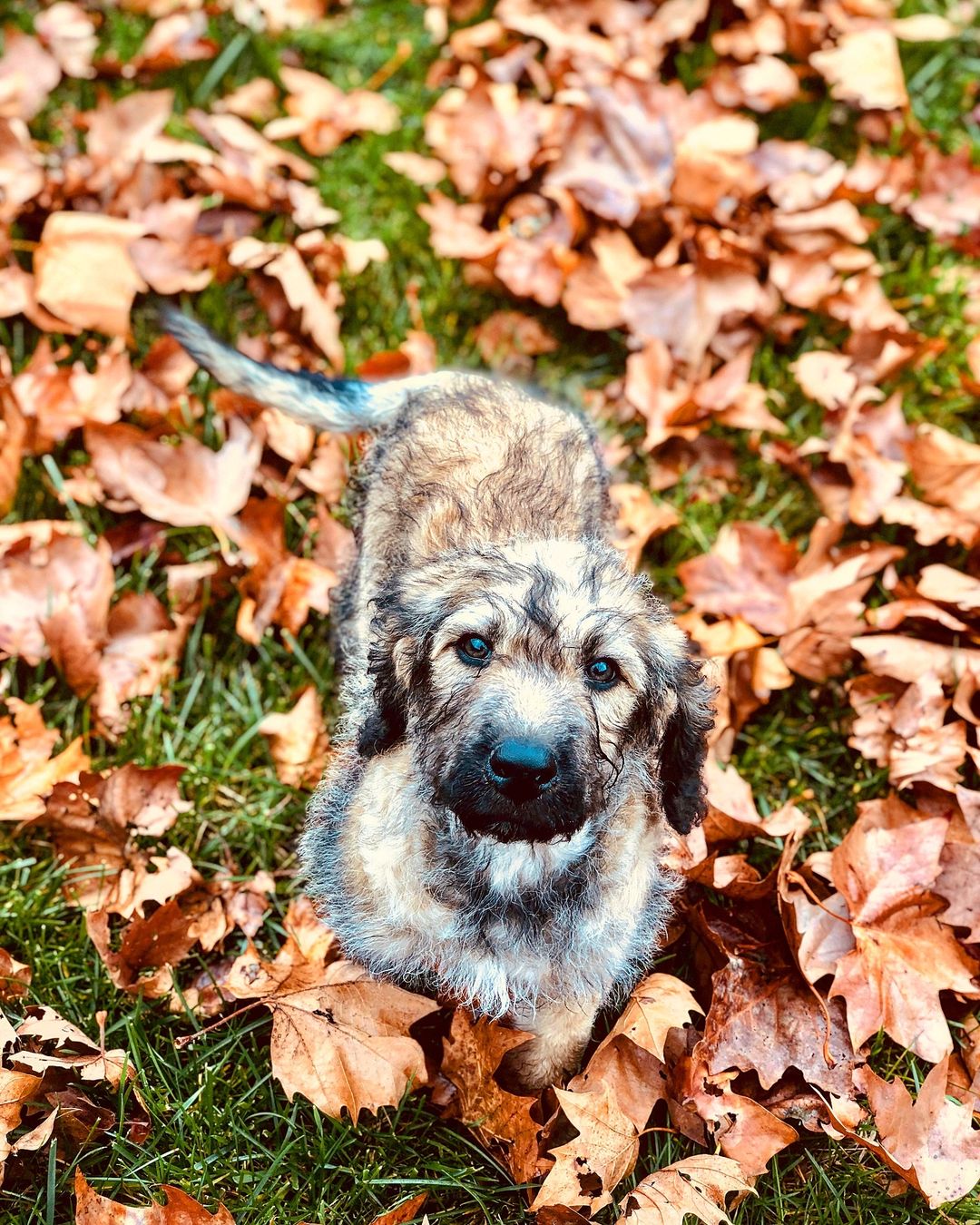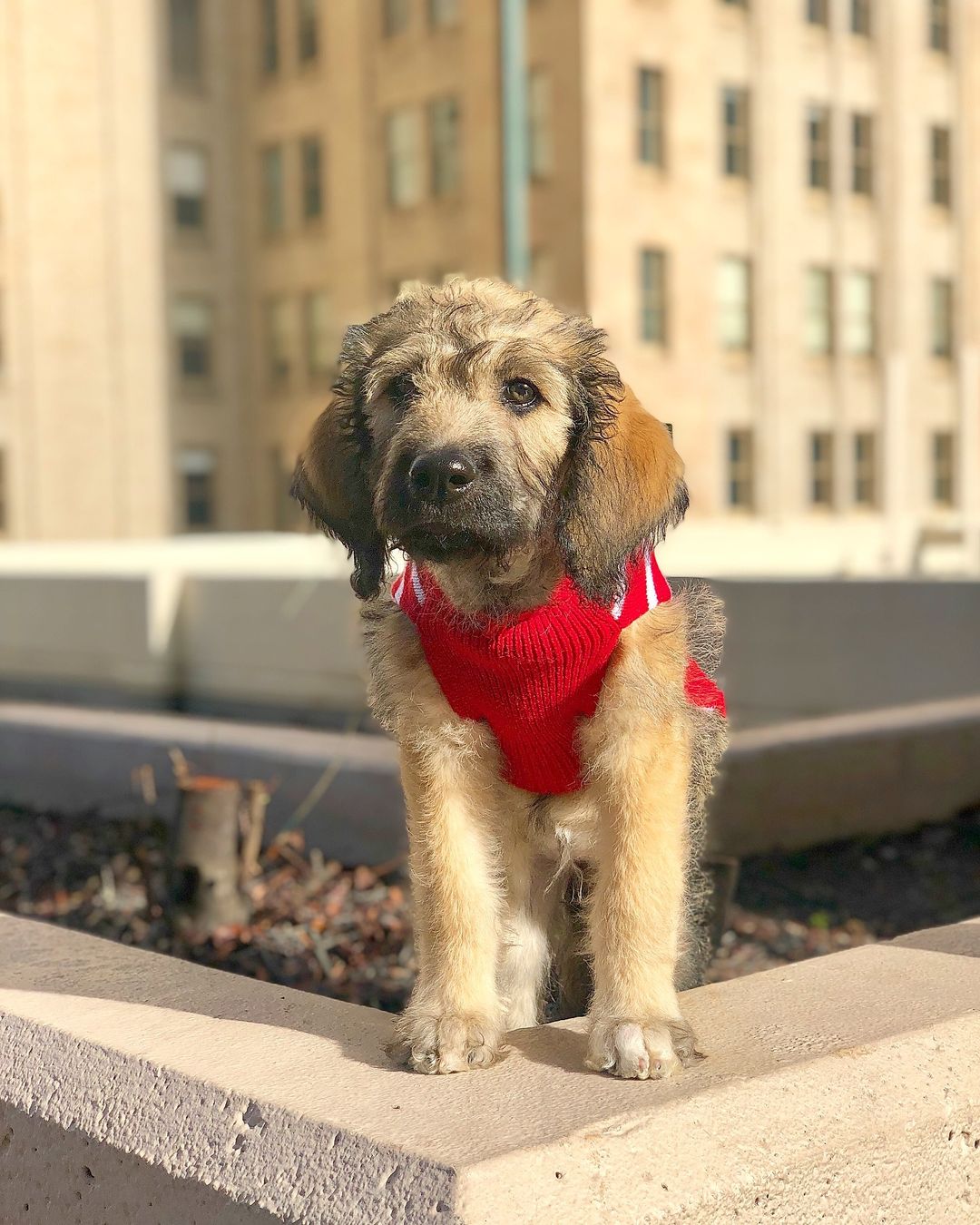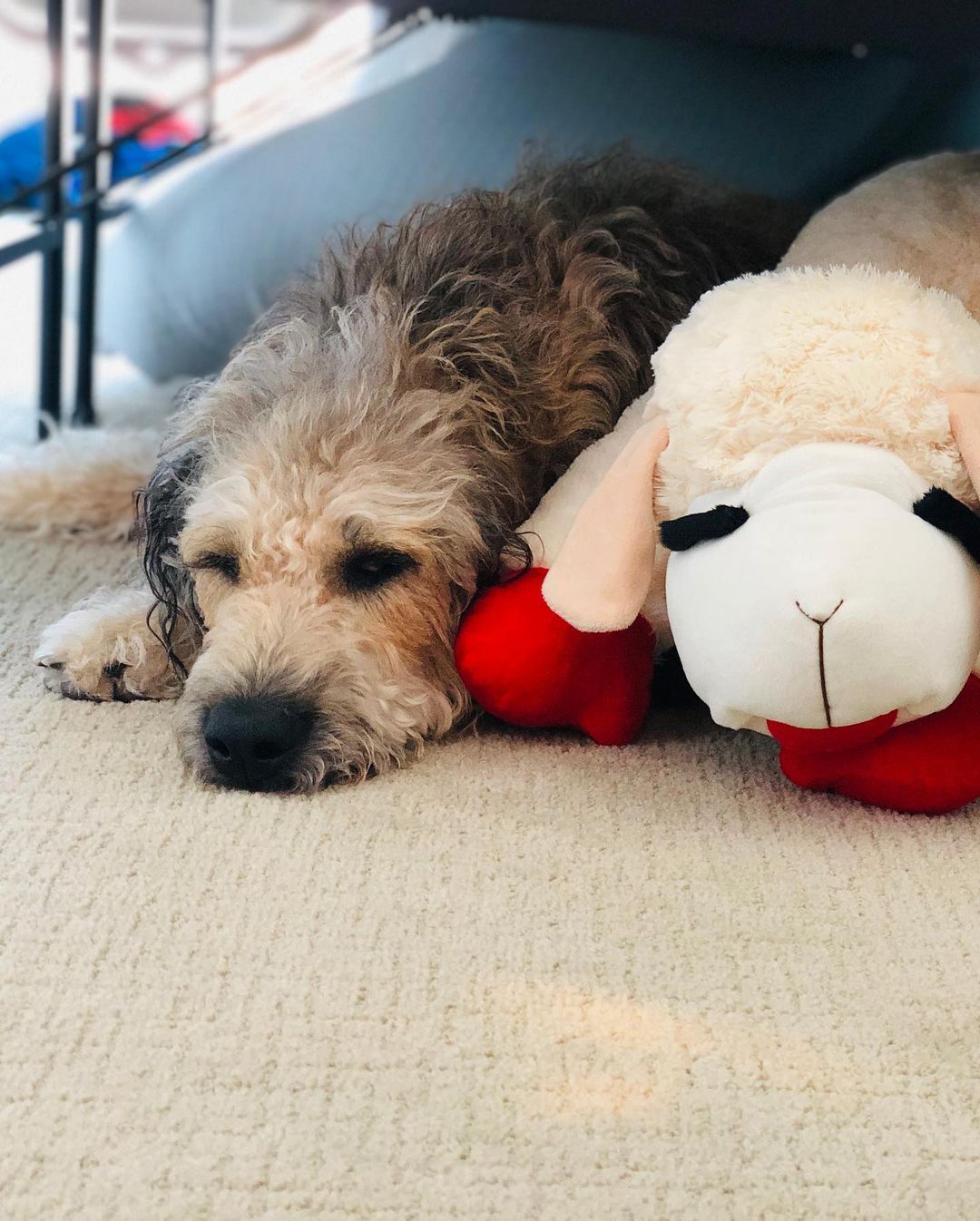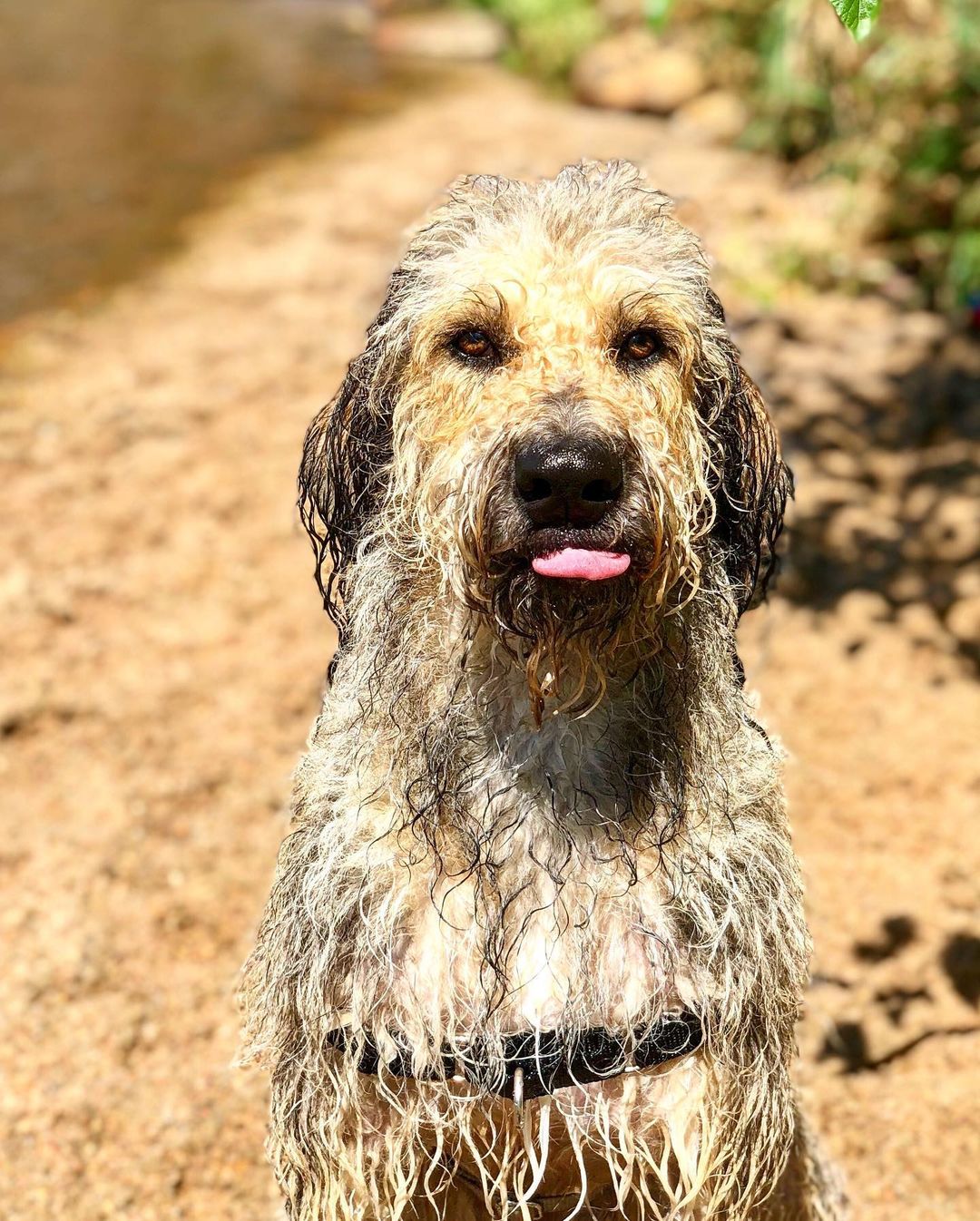The Mastidoodle is often seen as a dog’s big, cheerful teddy bear with a loyal and protective demeanor.
It is created by mixing the massive mastiff with the curly poodle.
With his quick wits and agile framework, the Mastidoodle’s poodle heritage is hard to miss.
In contrast, the breed’s Mastiff influence brings robust athleticism and family temperament, which makes the typical Mastidoodle a great dog for an active family.
Before deciding whether Mastiff Poodle puppies are the right choice for your home, however, you need to know the facts about the breed’s characteristics, health issues, and grooming requirements.
Purebred vs Designer Dogs
The Mastidoodle is classified as a “designer breed”.
That is, it is bred from two purebred dogs, in this case, a mastiff and a poodle.
The first part of making an informed decision is to fully understand the perceived strengths and weaknesses of designer breeds compared to purebred dogs.
Purebred
Those advocating purebred dogs argue that the purity of the breed guarantees some “predictability” about a dog’s traits, health concerns, and physical traits.
So you can be more certain of what you are getting.
The downside is that purebred dogs can suffer from a number of health and physiological problems that result from inbreeding.
Designer dogs
The greater genetic diversity of a designer breed, proponents argue, offers “hybrid power”, which more than compensates for the increased physical differentiation of a designer breed.
There is a lot of controversy surrounding this issue in dog breeding.
You will find plenty of research into both claims.
This “research> on pedigree dog prevention offers an interesting insight into the breeding efforts to meet purebred health challenges.
To get a better look at the comparison between purebred and designer pedigree dogs, The labrador site provides a great primer and starting point.
If you like your science in detail and are feeling brave, this “other paper” on the Institute of Canine Biology website goes deeper into the details.
Now that you are on the cutting edge, let’s focus on designer dogs and the effervescent, gentle giant, the Mastidoodle.
Origins of the Mastidoodle
We don’t know exactly when and where the Mastidoodle came from.
The best guess is that they were only developed in the United States twenty years ago.
However, we do have a lot of information about its parent breeds, the Mastiff and the Poodle.
Poodle origins
The poodle is believed to originated in Germany over 400 years ago, although much of the breed’s early development and refinement took place in France.
The poodle was bred to be a water hound, and to this day, that hunting sequence is evident in the breed’s passion for water, natural agility, and apparent intelligence.
Mastiff origins
If the poodle has a well-established history, the mastiff is venerable.
When the Romans 55 BC When they invaded Britain, they came across a huge and brave dog that easily outperformed the Roman breeds.
Unsurprisingly, the belligerent Romans took some home and used them to fight wild animals in the Colosseum.
Over the centuries, it has been bred out of the arena and into the role of a guard dog.
Today they are an extremely popular pet and companion known for their vigilance and loyalty.
Properties of Mastidoodle
Poodle
The standard poodle is about six inches tall and weighs between fifty and seventy pounds.
It has a well-proportioned, square-built frame that gives the breed their proud, almost proud demeanor.
Of course, one of the poodle’s most distinctive features is the tightly wavy coat.
Mastiff
The mastiff is a much larger dog.
Its height typically reaches around 25 inches and its weight ranges from 55 to 75 pounds.
It is an athletic dog with strong muscles and an alert, agile demeanor.
The Mastidoodle could weigh 55 to 100 pounds and be 15 to 30 inches tall.
Its traits will vary significantly depending on which of the parent breeds has a greater influence.
Mastidoodle
The Mastidoodle usually has a domed forehead, drooping ears, and almond-shaped eyes that are equally soulful and intelligent.
Colors can be black, brindle or cream.
The Mastidoodle is likely a large, solidly built dog, whose physical presence stems from both its muscular Mastiff and its proudly upright Poodle ancestors.
Mastidoodle temperament and behavior
The best way to describe the Mastidoodle’s potential temperament is to briefly look at the characteristics of Mastiffs and Poodles.
The poodle is known to be intelligent and adaptable.
It is therefore easy to train.
Poodles love any kind of exercise and will happily run, swim, and retrieve.
The mastiff develops strong bonds.
People are often surprised at how patient and caring they are, given their imposing size.
More vigilant than aggressive, they make great watchdogs and tend to have a domestic love affair.
The Mastiff x Poodle is said to mix these traits together.
The result is an extremely affectionate and intelligent dog who develops a strong bond with its family.
It is important to know that your Mastidoodle puppy is a random mix of his parents’ personalities and that he may give in more strongly to one of the parents.
Mastidoodle training and obedience
Both mastiffs and poodles respond very well to positive reinforcements.
Given the Mastidoodle’s likely blending of a poodle’s intelligence with a mastiff’s lust, training should usually be relatively straightforward if approached correctly.
The Mastidoodle may inherit a strong streak of protection from the Mastiff side of their family tree. Therefore, it is important to know the Mastidoodle puppy
Given the likelihood that your Mastidoodle puppy will be an extremely bright and sensitive animal (especially if the poodle pedigree is dominant), you may also need to be creative in finding new challenges and approaches throughout the training process.
Mastidoodle grooming
A Mastidoodle’s grooming needs vary.
If your Mastidoodle puppy inherited their fur from the poodle side, their fur will be wavier.
You need to groom yourself at least every other day to treat mats, burrs, and debris.
Perhaps the fur on your Mastiff-Poodle mix comes from more of the Mastiff side.
Then the fur is shorter, less wavy, and much easier to care for.
To get a feel for the degree of variation you can expect, be sure to check out some Mastidoodle pictures online.
It’s also important to check a Mastiff Doodle’s ears about every week.
They are particularly prone to infections and irritations.
Health issues and special needs
Start by finding a Mastidoodle puppy and talking to Mastiff Poodle cruisers.
Then it is important that you do your own research on the health issues and special needs of the breed.
The American Veterinary Medical Association (AVMA) recommends an early “health screening” just like you would for your health.
A good place to start is by evaluating the Poodle Health Review Recommendations and the Orthopedic Foundation for Animals
Based on this data, we have listed some of the known hereditary health problems to look for in Mastidoodles.
Elbow and Hip Rating
Hip and elbow dysplasia is a relatively common disease in mastiffs.
This is a hereditary skeletal disease.
The hips and elbows do not develop properly, which leads to a gradual deterioration in function.
Screening of eye diseases
Mastiffs are also somewhat prone to eye diseases, so a mastiff poodle cross is worth it
While these conditions may not develop until later in life, screening early can identify potential problems.
The OFA Ophthalmic Assessment Overview is a good resource.>
Other problems
Other conditions that should be screened for are hypothyroidism “Addison”, heart disease, and also cystinuria.>
Make sure you check with English Mastiff Poodle mix breeders to see if they can screen their pups for genetic issues and provide paperwork to ensure clean health.
If you can, it is a good idea to meet the pup’s parents.
Visually checking their condition can provide some important clues of potential health issues for your Mastidoodle puppy.
Also, always ask for advice on health tests from Mastidoodle’s parents.
If the breeders don’t come, we encourage you to find another breeder.
Is a Mastidoodle the Right Choice for You?
If you’re looking for an active family dog with a domestic love and ardent, curious intelligence, the Mastiff and Poodle mix is a great option.
For a Mastiff Poodle to be a good match, you need to be ready to focus on regular exercise.
It is also important to integrate your dog into your family’s life.
You don’t expect anything less!
In terms of health, always pay attention to the test results of the parents.
Before making a decision, gather as much information as you can about your Mastidoodle puppy’s background.
If you have any concerns, don’t hesitate to find another breeder.
Hopefully, this article will give you a good foundation on which to decide whether a Mastidoodle is a right companion for your family.
Let us know in the comments why you fell in love with Mastidoodle!
